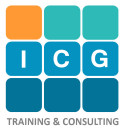MAP OF MODERN TRIZ
Valeri Souchkov, ICG Training &
Consulting, The Netherlands
© October 2018
Is TRIZ
complex? How big is it? What are its parts?
During more than 60 years of
development (starting with the first publication on TRIZ in 1956 [1]), TRIZ has
grown from a single tool to solve specific inventive problems to a large area of
knowledge which includes many different methods and tools to support different
tasks of innovation: solving specific inventive problems, improving existing
products, developing disruptive products and technologies, innovative
improvement of processes, radical cost cutting, technology benchmark, forecast
and roadmapping of future innovations of technical products and manufacturing
technologies.
Although new tools continue emerging to improve support of
technical innovation, current TRIZ developments expand applications of essential
methods and tools of TRIZ beyond engineering: TRIZ tools are being adapted for
solving innovative problems and roadmapping future innovations in non-technical
areas. In particular, one of such areas which is of high interest today is
business and management. A relatively new development which uses TRIZ background
is TRIZ Pedagogy which utilizes a systematic approach to creativity to develop
creative thinking and critical thinking skills in pre-school, school and college
environments.
Although there are many books which present TRIZ, not all parts of
modern TRIZ are collected and mentioned in a single book. The questions I hear
more and more often are, "What is included in TRIZ? What is a scope of TRIZ"? A
while ago a group of TRIZ developers published a paper "TRIZ Body of Knowledge"
[2] but at that time it did not present all parts of today's TRIZ.
The picture
below is my attempt to structure and map the body of TRIZ knowledge to show what
TRIZ consists of today, what its subjects of study are, what tasks are supported
by TRIZ, and what tools are used by TRIZ practitioners.
Large size image is available at
http://www.xtriz.com/trizmap/

References
[1] Altshuller G.S., Shapiro R.V. “About a
technology of creativity”, Questions of Psychology, #6, 37-49. 1956.
[2]
Litvin S., Petrov V., Rubin M. & Fey V. "TRIZ Body of Knowledge", MATRIZ, 2007.
ABOUT AUTHOR
Valeri Souchkov, TRIZ Master, co-founded Invention
Machine Lab (later Invention Machine Corporation) in 1989 and the European TRIZ
Association (ETRIA) in 2001. In 2003, he founded ICG Training and Consulting. In
total, he trained TRIZ to more than 6000 professionals and students from over 60
countries and participated in more than 100 innovative projects. His customers
list consists of more than 300 organizations, including such companies as 3M,
ASML, ABB, BASF, Canon, Danone, Fujifilm, LG Electronics, Microsoft, Orange,
Philips, PepsiCo, Siemens, Shell, TNT, Unilever. He is author of several modern
TRIZ tools and over 100 publications on TRIZ and Systematic Innovation.
Currently, he also teaches TRIZ at the University of Twente and TIAS Business
School. Valeri
was co-founder of the European TRIZ Association and Vice
President of the International TRIZ Association (MATRIZ).



